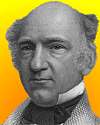
On 2 Apr 1814, Erastus Brigham Bigelow was born, an American industrialist, who developed power looms for making lace and many types of carpet. He invented his first loom for making coach lace at the age of 23.
He was a member of the committee that founded the Massachusetts Institute of Technology (MIT).
This short biography from A History of American Manufactures (1866) describes him as one of the "most eminent of American inventors."

On 2 Apr 1827, Joseph Dixon began the manufacturing of lead pencils in the U.S.at his factory in Salem, Mass. Dixon was responsible for the development of the graphite industry in the U.S. Today's book pick is: The Pencil: A History of Design and Circumstance, by Henry Petroski, who is one of your Webmaster’s favorite authors. Any of his books are mind-sharpening to read, because his talent for fine writing comes with a deep knowledge of engineering and technology. In this book, Petroski traces the evolution of the pencil through the Industrial Revolution, when machine manufacture replaced earlier handwork. Along the way, he looks at some of pencil making’s great innovators. One of those was Henry David Thoreau, the famed writer. He worked in his father’s pencil factory, inventing techniques for grinding graphite and experimenting with blends of lead, clay, and other ingredients to yield pencils of varying hardness and darkness. If you thought the pencil could never be the subject to fill a book, Petroski will pleasantly surprize you!
It is available from Amazon, typically about New from $7.82. Used from $1.99. (As of earlier time of writing - subject to change.)
 | Whenever there is a hard job to be done I assign it to a lazy man; he is sure to find an easy way of doing it. |
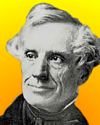 | [It would not be long] ere the whole surface of this country would be channelled for those nerves which are to diffuse, with the speed of thought, a knowledge of all that is occurring throughout the land, making, in fact, one neighborhood of the whole country. |
 | To the average mathematician who merely wants to know his work is securely based, the most appealing choice is to avoid difficulties by means of Hilbert's program. Here one regards mathematics as a formal game and one is only concerned with the question of consistency ... . The Realist position is probably the one which most mathematicians would prefer to take. It is not until he becomes aware of some of the difficulties in set theory that he would even begin to question it. If these difficulties particularly upset him, he will rush to the shelter of Formalism, while his normal position will be somewhere between the two, trying to enjoy the best of two worlds. |
| Before you look at today's web page, see if you can answer some of these questions about the events that happened on this day. Some of the names are very familiar. Others will likely stump you. Tickle your curiosity with these questions, then check your answers on today's web page. | |
| Births | |
 | Paul Joseph Cohen, born 2 Apr 1934, is an American mathematician who was recognized with an award for his proof of the independence of the continuum hypothesis from the other axioms of set theory. This award is the most prestigious given to mathematicians, and is regarded as the equivalent of a Nobel Prize in their discipline. What is the name of this award? |
| Deaths | |
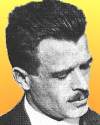 | A Swiss psychiatrist (1884-1922) devised the inkblot test that bears his name and that is widely used clinically for diagnosing psychopathology. What is the name of this scientist? |
 | Samuel Morse (1791-1872) was an American painter and inventor who, independent of similar efforts in Europe, developed an electric telegraph, and thereafter, devised the Morse Code. In which decade did Morse invent his code? |
| Events | |
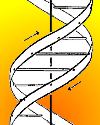 | On 1 Apr 1953, the journal Nature published a paper with this date titled Molecular Structure of Nucleic Acids: A Structure for Deoxyribose Nucleic Acid, in which they described a double helix structure for DNA. Who were the authors of the paper? |
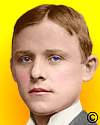 | On 1 Apr 1889, Charles M. Hall patented an inexpensive electrolytic process to extract a certain metal from its ore. Although this metal is the most abundant metal in the earth’s crust, it cannot be separated from its ore by a smelting process. Which metal did Hall’s process separate from its ore? |
Fast answers for the previous newsletter for April 1: William Harvey • second: Safety (security, employment, property); third Belongingness (love, relationships, friends); fourth: Esteem (status, recognition, accomplishment) • x-ray diffraction • The Times (London) • Dr. Joseph Lister.
 If you enjoy this newsletter, the website, or wish to offer encouragement or ideas, please send feedback by using your mail reader Reply button.
If you enjoy this newsletter, the website, or wish to offer encouragement or ideas, please send feedback by using your mail reader Reply button. Your click on a Facebook, StumbleUpon, or other social button on the site webpages is also a welcome sign of appreciation. Thank you for using them.
© This newsletter is copyright 2020 by todayinsci.com. Please respect the Webmaster's wishes and do not put copies online of the Newsletter — or any Today in Science History webpage. (If you already have done so, please remove them. Thank you.) Offline use in education is encouraged such as a printout on a bulletin board, or projected for classroom viewing. Online, descriptive links to our pages are welcomed, as these will provide a reader with the most recent revisions, additions and/or corrections of a webpage. For any other copyright questions, please contact the Webmaster by using your mail reader Reply button.
--
If you do not want to receive any more newsletters, Unsubscribe
To update your preferences and to unsubscribe visit this link
Executive Real Estate Business Class
-
"It was like a man with wings. It wasn't like anything you'd see on TV or in a monster movie." ...
About the publisher
Search This Blog
Blog Archive
-
▼
2021
(585)
-
▼
April
(57)
- On This Day for April 30 - George Washington inaug...
- Newsletter for Friday 30 April.
- On This Day for April 29 - British royal wedding, ...
- Newsletter for Thursday 29 April.
- On This Day for April 28 - Benito Mussolini execut...
- Newsletter for Wednesday 28 April.
- On This Day for April 27 - Independence for Sierra...
- Newsletter for Tuesday 27 April.
- On This Day for April 26 - Chernobyl nuclear accid...
- Newsletter for Monday 26 April.
- On This Day for April 25 - Hubble Space Telescope ...
- See How They Tracked Down Bin Laden
- Newsletter for Sunday 25 April.
- On This Day for April 24 - Installation of Pope Be...
- Newsletter for Saturday 24 April.
- On This Day for April 23 - Voting for Eritrea's in...
- Earth Day Bonus: Become a Climate Action Expert
- On This Day for April 22 - First Earth Day, Miguel...
- On This Day for April 21 - French elections held, ...
- Newsletter for Wednesday 21 April.
- On This Day for April 20 - Explosion on the Deepwa...
- Newsletter for Tuesday 20 April.
- On This Day for April 19 - American Revolution beg...
- Newsletter for Monday 19 April.
- On This Day for April 18 - The midnight ride of Pa...
- Newsletter for Sunday 18 April.
- On This Day for April 17 - Canada Act proclaimed, ...
- Newsletter for Saturday 17 April.
- On This Day for April 16 - Harriet Quimby's flight...
- Newsletter for Friday 16 April.
- On This Day for April 15 - Sinking of the Titanic,...
- Newsletter for Thursday 15 April.
- On This Day for April 14 - Abraham Lincoln shot, J...
- On This Day for April 13 - Alfred Dreyfus imprison...
- Newsletter for Tuesday 13 April.
- On This Day for April 12 - Launch of first space s...
- Newsletter for Monday 12 April.
- John of Gaunt: father of England’s medieval monarchy
- On This Day for April 11 - Napoleon's abdication a...
- Newsletter for Sunday 11 April.
- On This Day for April 10 - Anschluss approved in A...
- On This Day for April 9 - Fall of Baghdad, Jørn Ut...
- Newsletter for Friday 9 April.
- On This Day for April 8 - Celebration of the Buddh...
- On This Day for April 7 - Jack Nicklaus's first Ma...
- Newsletter for Wednesday 7 April.
- On This Day for April 6 - Olympics revived, Raphae...
- On This Day for April 5 - Battle of Maipú, Colin P...
- The history and origins of Easter
- On This Day for April 4 - Martin Luther King, Jr.,...
- Newsletter for Sunday 4 April.
- On This Day for April 3 - Implementation of the Ma...
- Newsletter for Saturday 3 April.
- On This Day for April 2 - Death of Pope John Paul ...
- Newsletter for Friday 2 April.
- On This Day for April 1 - Creation of Nunavut, Ser...
- Newsletter for Thursday 1 April.
-
▼
April
(57)
-
Blogroll
-
About
HistoryFact










0 comments:
Post a Comment